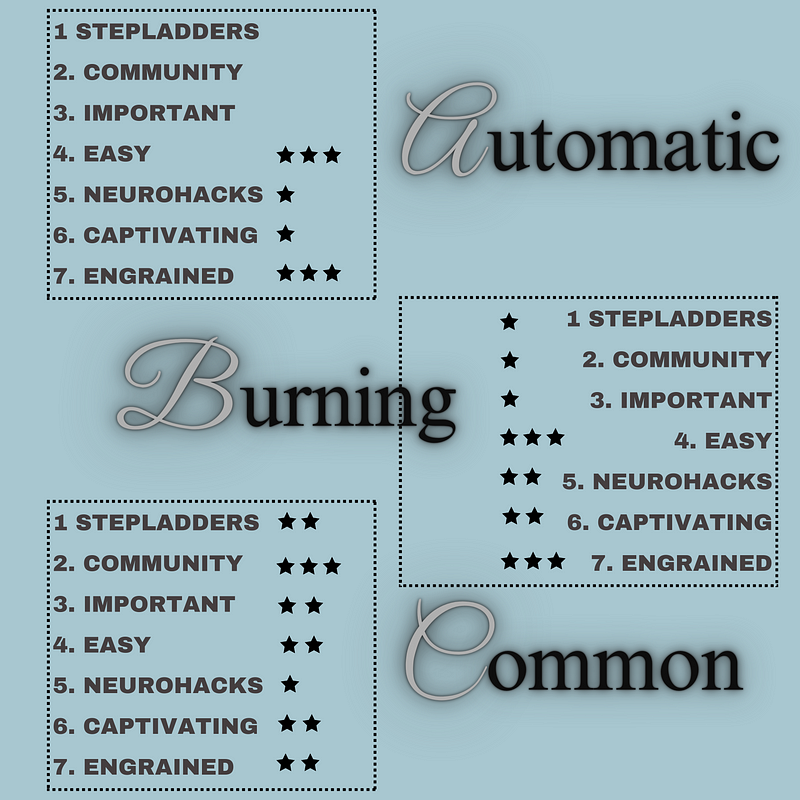Change Process, Not Personality
Mastering Habits is a SCIENCE and needs a PROCESS. Find out what you’re missing in making your habit stick!

INTRODUCTION
Are you struggling with making a habit stick?
Apparently, you don’t really need to remain stuck with this problem.
There is a solution, a Scientific one — those ones seem to work best :).
In his book ‘Stick With It,’ Dr. Sean D. Young talks about “7 Science FORCES to achieve lasting change.”

One of these 7 forces could be the light bulb moment you were looking for in your struggle to change an old habit or make a new one.
I plan to analyze one force each day. I am using one of my successful habits to determine whether I intuitively used any of these in my process. If yes, then I will check how well they contributed to making the habit stick.
My Successful Habit: Reading Aloud to my son daily.
I have achieved this with considerable success for the past five years — having read over a thousand books multiple times.
So, I will analyze how these 7 forces came into play in making this habit stick for me.
Why should you care about this?
- To gain scientific knowledge on this topic
- To be better informed before changing an old habit
- To take the right approach while forming a new habit
- To achieve 100% success in making habits stick

What Dr. Young says about Process v/s Personality —
“Recent research shows that seven psychological forces support the ability of people to stick with their plans — in both life and work. The more of these forces people incorporate in their behaviors, the more likely they are to stick with something until they reach a goal…
If we know the psychology behind how to get people to stick with things, we can address all of these challenges.”
— Dr. Sean D. Young (Stick With It)
Furthermore, according to Dr. Young, the core of the problem is that we are trying to change the personality or the person if we go by conventional wisdom. But we should focus on the 'Process' instead. Here's his quote —
“Conventional wisdom comes down to: change your personality. Become like those people with extraordinary willpower, develop your presence, or fire yourself up to want something so passionately that you will overcome all difficulties in your path. This kind of advice attempts to change the person, not their process.”
He goes on to explain how we CANNOT change our personalities easily and what does it mean exactly —
“Every person has a core personality*. This personality doesn’t change much throughout life.
*I use the word personality because it’s easy to understand, but it’s not the correct term, scientifically. The more precise idea is that people have a specific psychology. The way they act is affected by their culture, race, religion, genetics, and even the current moment. Collectively these things make people who they are, and it’s really hard to change this collective ‘personality’.”
Overview of the Process
Okay, so now we get that — if we change the PROCESS of our habit formation, we can make the habit stick.
Now, let’s dive into the process!
The book provides a blueprint for achieving change in your life. It teaches you how to alter behaviors using seven SCIENCE forces behind lasting change.
The 7 Forces of Lasting Change are as follows:
- Stepladders
- Community
- Important
- Easy
- Neurohacks
- Captivating
- Engrained
In further articles, we will dive deeper into each of these ‘Science Forces’ and learn about them.
Also, I will evaluate how I did against each of these forces in the last 5 years to reach my goal of ‘Reading 1000+ Books With My Son.’
I will update this story with the links to the 7 forces as and when I complete them so you can have all the references in one place.
Conclusion
We really want some things for ourselves but think they are too hard to achieve. Maybe we’ve even tried and failed. We blame it on our personalities.
It is time we change our mindset about those things.
Time to take a different approach.
Give the 7 forces a chance to work for you in setting new habits and breaking the bad ones.
But which of these forces should we focus on for our habits?
To replace an old behavior with a new one, we need to use the right force.
An important factor in deciding that is what kind of habit it is — A, B, or C?
A — Automatic [unconscious behaviors: you do not realize you are doing it]
B — Burning [irresistible urge or burning desire to do something]
C — Common [most common behaviors people try to change]
A different combination of the 7 forces is required for the different habit types.
Here’s an overview of the importance levels suggested

According to the book, using as many forces as possible to achieve maximum success in making habits stick is best.
I hope you follow along on the journey, get the most out of the information, and use it to improve your life.







